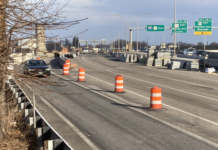
NEW YORK — Prices for single-family homes climbed in 87 percent of U.S. cities in the second quarter as the national housing recovery accelerated amid competition for a limited number of properties on the market.
The median transaction price rose from a year earlier in 142 of 163 metropolitan areas measured, the National Association of Realtors said in a report today. A year earlier, 75 percent of regions had gains.
Values are increasing as homebuyers, encouraged by improving employment, compete for a tight supply of listed properties. At the end of the second quarter, 2.19 million previously owned homes were available for sale, 7.6 percent fewer than a year earlier, according to the Realtors group.
“There continue to be more buyers than sellers, and that is placing pressure on home prices, with multiple bids common in some areas of the country,” Lawrence Yun, chief economist for the National Association of Realtors, said in the report.
The median price for an existing single-family home was $203,500 nationally in the second quarter, up 12 percent from a year earlier. That was the biggest gain since the fourth quarter of 2005, according to the Realtors group.
Cities with tight supplies of homes for sale had the strongest price growth, the Realtors said. Eight markets were added to the report in the quarter.
Biggest Gains
The best-performing areas were Sacramento, Calif., and Atlanta, where prices jumped 39 percent from a year earlier. Prices rose 36 percent in Fort Myers, Fla.; 33 percent in Reno, Nev.; and 31 percent in Las Vegas.
The Peoria, Ill., area had the biggest decline, falling 9.2 percent from a year earlier. Following were Florence, S.C., with an 8.4 percent drop, and Erie, Pa., with a 5.7 percent decrease. Prices fell 5 percent in Pittsfield, Mass., and 4.8 percent in Decatur, Ill.
Single-family home prices in the Providence -New Bedford-Fall River metro area rose 7.5 percent, from a median price of $217,500 in the second quarter of 2012 to $233,900 in the second quarter of this year. The median condominium price hit $177,100, up 16.1 percent from a price of $152,500 in the second quarter last year.
The housing recovery is strengthening amid a drop in the unemployment rate, which fell to 7.4 percent in July from 7.6 percent the previous month, according to Labor Department data.
Rising borrowing costs may hurt future demand. Mortgage rates for 30-year loans have climbed from a near-record low of 3.35 percent in early May, rising to 4.4 percent in the week ended today, according to McLean, Virginia-based Freddie Mac.
“Higher interest rates are now causing sales to level out, but the tight supply conditions look to be with us for the balance of the year in most of the country,” Yun said.
‘Sustained recovery’
While rising borrowing costs may spur more buyers to jump into the market soon to lock in interest rates before they climb even higher, the gain in home prices is likely to slow in the second half of the year, said Millan Mulraine, director of U.S. rates research at TD Securities in New York. The effects of higher loan costs won’t be dramatic enough to have a major impact on the housing recovery, he said.
“Up until the middle of this year, the housing sector was essentially beginning to show signs of a strong and sustained recovery,” Mulraine said in a telephone interview. “We do expect to see further improvement in prices, but not to the extent that we saw in the first half of this year.”
In a separate report today, the Mortgage Bankers Association said that the share of seriously delinquent U.S. mortgages — those more than 90 days behind or in the foreclosure process — plunged to the lowest level in almost five years. As the housing recovery strengthens, delinquent borrowers have been able to catch up on payments or seek loan modifications.












